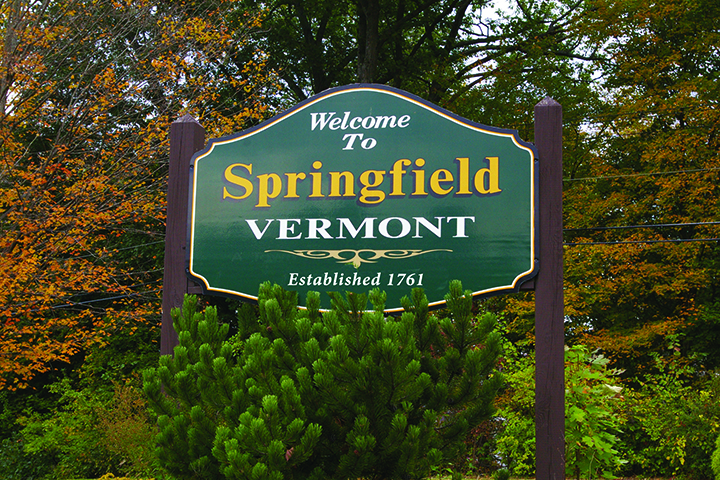SPRINGFIELD, Vt. – The Springfield Selectboard heard from Springfield Housing Authority executive director Laura Ryan during the first of two public hearings held on Monday night, Feb. 12. Ryan reported on the replacement of the ventilation system at the Huber Building at 80 Main Street, a nearly completed, grant-funded project.

The town had received $525,000 in funds from the state under the Vermont Community Development Program (VCDP), and were required to hold two public hearings informing residents of how the money was spent.
“After 50 years without a ventilation system, we now have an efficient system with improved air quality,” Ryan stated. The project was nearly 100% covered by the VCDP program.
The second public hearing was in regards to the proposed rewording of an ordinance concerning non-motorized vehicles on town streets. This revision would permit people who use skates or scooters as transportation to do so.
The board received no public opposition, or even much discussion, on either hearing item. The revision to the Non-Motorized Transportation Ordinance was unanimously approved by the board.
Board Chair Kristi Morris called the regular selectboard meeting to order, starting as always with the Pledge of Allegiance.
The Cheshire Bridge, or “Toll Bridge,” Project was introduced to the board by David Scott, the in-house design chief of the Bureau of Bridge Design for the New Hampshire Department of Transportation.
Hardesty and Hanover project manager Kim Smith took the board through a detailed presentation of the project, targeting deteriorated and corroded sections of the bridge, and including repairs, replacment of faulty sections, and painting. Originally built in 1930, the bridge is a section of Route 11, crossing the Connecticut River between Springfield, Vt., and Charlestown, N.H. Smith reported that the bridge received “some rehab” in 1992, and was part of a bridge preservation project in 2015 that replaced the deck expansion joints.
Senior highway engineer Stephanie Micucci reviewed the traffic control plan, which will span 34 weeks of construction, require an alternating traffic pattern, and a period of time where the bridge will be fully closed. Larger trucks will need to be detoured due to the narrow width of the bridge. The 20-mile detour will extend between Exits 6 and 7 on I-91.
The team informed the board that any environmental impacts will be temporary, and they are coordinating with several conservation organizations to avoid disturbing aquatic plants and other species.
Additionally, after the completion of the archaeological survey, it was determined that the Cheshire Toll Bridge is eligible for listing on the National Register of Historic Places.
Construction is scheduled to begin in spring 2025, with an estimated construction cost of $6.26 million.
“New Hampshire and Vermont share almost every bridge, but this bridge is 100% owned by New Hampshire,” Scott said, prompting a small cheer from Morris.
Sue Skaskiw with the Vermont Volunteer Services for Animals was at the meeting to attain a permit to hold their annual rabies vaccinations clinic on March 2, in the parking lot of the Riverside Middle School. The board approved the request, and Skaskiw mentioned the event could use more volunteers.
Prior to adjorning the nearly three-hour meeting, the board welcomed Alexander Moreau, a cameraman new to SAPA TV who was covering the meeting for the first time.
Moreau asked, “Are the meetings always this long?”
Board member Michael Martin responded, “No, usually they’re longer!”
The remark elicited laughter from the room.